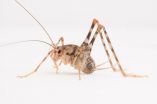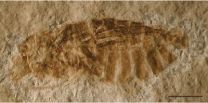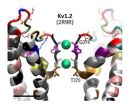(Press-News.org) New research involving mice suggests that the key to more youthful immune function might already be in your medicine cabinet. In a report published in the Journal of Leukocyte Biology scientists show that macrophages from the lungs of old mice had different responses to Mycobacterium tuberculosis than macrophages from young mice, but these changes were reversed by ibuprofen.
"Inflammation in old age can have significant consequences on immune function," said Joanne Turner, Ph.D., a researcher involved in the work from the Department of Microbial Infection and Immunity and Center for Microbial Interface Biology at The Ohio State University in Columbus, Ohio. "With this knowledge, it may be possible to reduce or prevent some diseases in the elderly by decreasing inflammation with diet, exercise and/or drugs."
To make this discovery, scientists measured inflammatory markers in the total lung or within purified macrophage populations of young healthy mice and of old healthy mice. Inflammatory markers were elevated in old mice, and isolated macrophages from both old and young healthy mice responded differentially to infection with Mycobacterium tuberculosis in vitro. This suggests that the altered interactions with M. tuberculosis were linked to inflammation in old age. The researchers then placed a group of old, but healthy, mice on an ibuprofen supplemented diet, and this reduced inflammation and restored immune function to that of young healthy mice.
"This may give new meaning to the phrase 'take two aspirins and call me in the morning,'" said John Wherry, Ph.D., Deputy Editor of the Journal of Leukocyte Biology. "The report may not be about aspirin, but it does show that over-the-counter remedies may broader value that usually appreciated, including by affecting immune functions that change with age."
INFORMATION:
The Journal of Leukocyte Biology publishes peer-reviewed manuscripts on original investigations focusing on the cellular and molecular biology of leukocytes and on the origins, the developmental biology, biochemistry and functions of granulocytes, lymphocytes, mononuclear phagocytes and other cells involved in host defense and inflammation. The Journal of Leukocyte Biology is published by the Society for Leukocyte Biology.
Details: Cynthia H. Canan, Nandan S. Gokhale, Bridget Carruthers, William P. Lafuse, Larry S. Schlesinger, Jordi B. Torrelles, and Joanne Turner. Characterization of lung inflammation and its impact on macrophage function in aging. J Leukoc. Biol. September 2014. 96:473-480; doi:10.1189/jlb.4A0214-093RR ; http://www.jleukbio.org/content/96/3/473.abstract
Over-the-counter pain reliever may restore immune function in old age
New research published in the Journal of Leukocyte Biology suggests that macrophages from the lungs of old mice responded differently to infections than those of young mice, ibuprofen reversed these changes
2014-09-02
ELSE PRESS RELEASES FROM THIS DATE:
Coffee increases prediabetes risk in susceptible young adults
2014-09-02
Barcelona, Spain – Tuesday 2 September 2014: Coffee increases the risk of prediabetes in young adults with hypertension who are slow caffeine metabolisers, according to results from the HARVEST study presented at ESC Congress today by Dr Lucio Mos from Italy. People who drank more than three cups of coffee per day doubled their risk of prediabetes.
Dr Mos said: "Lifestyle factors are very important for the prognosis of young people with hypertension. In a previous analysis of HARVEST (Hypertension and Ambulatory Recording VEnetia STudy) we found that coffee was a risk ...
The Lancet: European Society of Cardiology Congress 2014 media alert
2014-09-02
The Lancet is pleased to announce that the following papers will be published to coincide with presentation at the ESC Congress 2014, taking place in Barcelona, Spain, 30 August – 3 September 2014:
Ultrathin strut biodegradable polymer sirolimus-eluting stent versus durable polymer everolimus-eluting stent for percutaneous coronary revascularisation (BIOSCIENCE): a randomised, single-blind, non-inferiority trial, Windecker et al
Refinements in stent design affecting strut thickness, surface polymer, and drug release have improved clinical outcomes of drug-eluting stents. ...
War between bacteria and phages benefits humans
2014-09-02
BOSTON (September 2, 2014) — In the battle between our immune systems and cholera bacteria, humans may have an unknown ally in bacteria-killing viruses known as phages. In a new study, researchers from Tufts University, Massachusetts General Hospital, Partners In Health, Haiti's National Public Health Laboratory, and elsewhere, report that phages can force cholera bacteria to give up their virulence in order to survive. Importantly, the study — published in eLife — found that cholera's mutational escape from phage predation occurs during human infection.
First author ...
Migrating birds sprint in spring, but take things easy in autumn
2014-09-02
Passerine birds, also known as perching birds, that migrate by night tend to fly faster in spring than they do in autumn to reach their destinations. This seasonal difference in flight speed is especially noticeable among birds that only make short migratory flights, says researcher Cecilia Nilsson of Lund University in Sweden, in Springer's journal Behavioral Ecology and Sociobiology.
Nilsson, in a group led by professor Thomas Alerstam, used a tracking radar to measure over three years the speed by which birds flew over Falsterbo Peninsula, a bird migratory hot spot ...
Nano-forests to reveal secrets of cells
2014-09-02
Vertical nanowires could be used for detailed studies of what happens on the surface of cells. The findings are important for pharmaceuticals research, among other applications. A group of researchers from Lund University in Sweden have managed to make artificial cell membranes form across a large number of vertical nanowires, known as a 'nano-forest'.
All communication between the interior of a cell and its surroundings takes place through the cell membrane. The membrane is a surface layer that holds the cell together and that largely comprises lipids, built of fatty ...
Scientists find possible neurobiological basis for tradeoff between honesty, self-interest
2014-09-02
What's the price of your integrity? Tell the truth; everyone has a tipping point. We all want to be honest, but at some point, we'll lie if the benefit is great enough. Now, scientists have confirmed the area of the brain in which we make that decision.
The result was published online this week in Nature Neuroscience.
"We prefer to be honest, even if lying is beneficial," said Lusha Zhu, the study's lead author and a postdoctoral associate at the Virginia Tech Carilion Research Institute, where she works with Brooks King-Casas and Pearl Chiu, who are assistant professors ...
Researchers find Asian camel crickets now common in US homes
2014-09-02
With their long, spiky legs and their propensity for eating anything, including each other, camel crickets are the stuff of nightmares. And now research from North Carolina State University finds that non-native camel cricket species have spread into homes across the eastern United States.
"The good news is that camel crickets don't bite or pose any kind of threat to humans," says Dr. Mary Jane Epps, a postdoctoral researcher at NC State and lead author of a paper about the research.
The research stems from a chance encounter, when a cricket taxonomist found an invasive ...
Exceptionally well preserved insect fossils from the Rhône Valley
2014-09-02
In Bavaria, the Tithonian Konservat-Lagerstätte of lithographic limestone is well known as a result of numerous discoveries of emblematic fossils from that area (for example, Archaeopteryx). Now, for the first time, researchers have found fossil insects in the French equivalent of these outcrops - discoveries which include a new species representing the oldest known water treader.
Despite the abundance of fossils in the equivalent Bavarian outcrops, fewer fossils have been obtained from the Late Kimmeridgian equivalents of these rocks in the departments of Ain and Rhône ...
Surprising new role for calcium in sensing pain
2014-09-02
DURHAM, N.C. -- When you accidentally touch a hot oven, you rapidly pull your hand away. Although scientists know the basic neural circuits involved in sensing and responding to such painful stimuli, they are still sorting out the molecular players.
Duke researchers have made a surprising discovery about the role of a key molecule involved in pain in worms, and have built a structural model of the molecule. These discoveries, described Sept. 2 in Nature Communications, may help direct new strategies to treat pain in people.
In humans and other mammals, a family of ...
Single laser stops molecular tumbling motion instantly
2014-09-02
In the quantum world, making the simple atom behave is one thing, but making the more complex molecule behave is another story.
Now Northwestern University scientists have figured out an elegant way to stop a molecule from tumbling so that its potential for new applications can be harnessed: shine a single laser on a trapped molecule and it instantly cools to the temperature of outer space, stopping the rotation of the molecule.
"It's counterintuitive that the molecule gets colder, not hotter when we shine intense laser light on it," said Brian Odom, who led the research. ...
LAST 30 PRESS RELEASES:
Neuroscientists devise formulas to measure multilingualism
New prostate cancer trial seeks to reduce toxicity without sacrificing efficacy
Geometry shapes life
A CRISPR screen reveals many previously unrecognized genes required for brain development and a new neurodevelopmental disorder
Hot flush treatment has anti-breast cancer activity, study finds
Securing AI systems against growing cybersecurity threats
Longest observation of an active solar region
Why nail-biting, procrastination and other self-sabotaging behaviors are rooted in survival instincts
Regional variations in mechanical properties of porcine leptomeninges
Artificial empathy in therapy and healthcare: advancements in interpersonal interaction technologies
Why some brains switch gears more efficiently than others
UVA’s Jundong Li wins ICDM’S 2025 Tao Li Award for data mining, machine learning
UVA’s low-power, high-performance computer power player Mircea Stan earns National Academy of Inventors fellowship
Not playing by the rules: USU researcher explores filamentous algae dynamics in rivers
Do our body clocks influence our risk of dementia?
Anthropologists offer new evidence of bipedalism in long-debated fossil discovery
Safer receipt paper from wood
Dosage-sensitive genes suggest no whole-genome duplications in ancestral angiosperm
First ancient human herpesvirus genomes document their deep history with humans
Why Some Bacteria Survive Antibiotics and How to Stop Them - New study reveals that bacteria can survive antibiotic treatment through two fundamentally different “shutdown modes”
UCLA study links scar healing to dangerous placenta condition
CHANGE-seq-BE finds off-target changes in the genome from base editors
The Journal of Nuclear Medicine Ahead-of-Print Tip Sheet: January 2, 2026
Delayed or absent first dose of measles, mumps, and rubella vaccination
Trends in US preterm birth rates by household income and race and ethnicity
Study identifies potential biomarker linked to progression and brain inflammation in multiple sclerosis
Many mothers in Norway do not show up for postnatal check-ups
Researchers want to find out why quick clay is so unstable
Superradiant spins show teamwork at the quantum scale
Cleveland Clinic Research links tumor bacteria to immunotherapy resistance in head and neck cancer
[Press-News.org] Over-the-counter pain reliever may restore immune function in old ageNew research published in the Journal of Leukocyte Biology suggests that macrophages from the lungs of old mice responded differently to infections than those of young mice, ibuprofen reversed these changes






